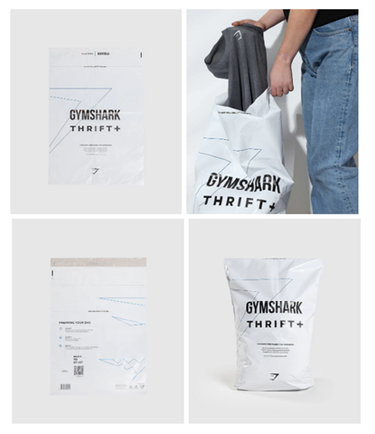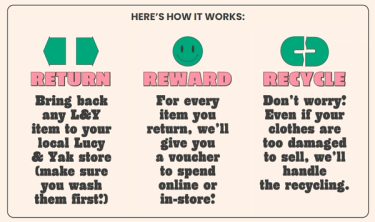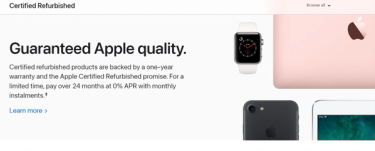Insight8 min read
Reverse commerce: Putting reduce, reuse, recycle at the forefront of your brand
Mon Mar 27 2023 | Marketing Team

- Insight
- Web & eCommerce
Tags
As sustainability becomes a key focus for businesses, the rise of reverse commerce is not something brands can ignore. But what does this movement mean and why should you care?
Second-hand shopping is on the up. Gone are the days where hand me downs or charity shop finds weren’t the done thing. From 2016 to 2022, the clothes resale market saw an increase of 149 percent showing that consumerism is evolving and thrifting, recycling and reusing are all the name of the game. A welcome development for those already focused on buying used products, charity and thrift shops are jumping for joy. But for retailers whose business model is geared around new product cycles, how can their brand evolve with the sustainability movement? In this blog, we take a look at what reverse commerce is and how your brand can benefit from this movement.
The rise of recommerce
Reverse commerce, or recommerce, is the concept of buying and selling used goods. The principle itself is nothing new, with eBay and Gumtree both leading the way in second-hand shopping for over 20 years. Although the concept is a tale as old as time, reselling items was limited to specific platforms and stayed in its own lane.
So, what changed?
Sustainability and the environment have been bubbling away in consumers’ minds for some time. Even purchasing decisions are being swayed by a company’s sustainability efforts. Now, with 77 percent of adults voicing their concerns over the cost of living crisis, it’s easy to see why second hand shopping is having a well-deserved moment.Second hand retail in particular has seen a growing demand in recent years, with platforms such as Vinted and Depop dominating the landscape. In 2022, Love Island made the news when they announced their partnership with eBay to dress the contestants in ‘pre-loved’ items only. This was a huge change from their prior partnerships with big-name fast fashion brands.While brands have been focusing on the increased demand for sustainability, this has been more geared around changes to do with packaging, product materials and delivery. Now, alongside this, brands must look at how they can introduce reusing or recycling their existing products into their business model.
How can recommerce benefit your brand?
It's clear that second-hand shopping isn’t just a fad, with further predicted global growth of 16 percent between 2022 and 2026. The shopping landscape continues to develop, with more pressure from consumers to offer environmentally friendly purchasing options. If your brand doesn’t tap into this market, you’re losing revenue.
Attract new markets
Customer acquisition is always a key motive for businesses, no matter what product or service you provide. But the question is, how do you attract new customers? By diversifying your product offering and opening up to reverse commerce, you’re tapping into new revenue streams. A report from eBay found that Gen Z are leading the way in recommerce, with 80 percent buying second-hand products. The report also highlighted Gen Z were the highest for new sellers in the space, making up 32 percent of the market. As the latest generation to hit the workforce with disposable income, it’s important to capture their interest with second-hand options. Failing to do so means lost revenue to competitor brands.
Lower costs widen your audience pool
Recommerce also allows you to offer different price points for your products. For new items and releases, your traditional pricing model continues to serve existing customers who can afford, or are willing to pay, for these. By using recommerce in your strategy, you open the door for customers who may be interested in your items but can’t afford the price point for new products. To entice new customers, you can implement strategies similar to that of H&M, who accept old clothes from any brand not just their own. This gives new customers an incentive to give your products a go, without the need to buy new before benefiting from buyback schemes.
Retain your existing customer base
New customers are great, but failing to prioritise those who already shop with you is a mistake. As sustainability is a widespread concern, it’s likely that some of your existing customers are already changing their shopping habits. By providing second-hand or recycling options, your customers don’t need to look elsewhere. Instead, they can change their shopping habits with a brand they trust, know and like.
Boost your brand's credibility
Focusing on how your brand impacts the environment is important for how people perceive your brand. And in a world of social media, where everyone has an opinion, it’s vital that people’s perception of your business is a good one. So, how do you ensure your brand is on the right side of public opinion? The simplest way is often the best way: do good to be good. Be authentic in your actions and show consumers that you can walk the walk by putting time and effort into your sustainability and recommerce strategy. If people think your motives for change are insincere, they won’t buy into your brand.
Leading the way in reverse commerce
Since the boom of recommerce, many big-name brands have started to implement resale or recycle into their strategy. We’ve collated some of our favourites, showcasing how this movement can tie into a brand’s existing identity:
Gymshark gets thrifty

Gymsharks Thrift + programme takes a spin on recommerce. Recognising that second-hand gym clothes aren’t necessarily everyone’s cup of tea, the brand announced the release of ‘Thrift +’ that allows customers to send bags of used clothing to Gymshark in exchange for points when those items are sold on. Customers can then use these points on a variety of sites, including Gymshark, or donate the value of their points to charity.
Lucy & Yak’s re-yak

Already known for their efforts to support sustainability, Lucy & Yak have introduced their latest initiative which allows customers to return old products in exchange for a voucher to spend with them. This new scheme joins their existing efforts, which include their Facebook Marketplace where shoppers can buy and sell Lucy & Yak products.
Apple forges the way for tech recommerce

It may be booming in the clothes sector, but recommerce is not just limited to the fashion industry. In typical Apple style, they were ahead of the game and first offered refurbished phones on the website back in 2016. Along with Macs and iPads, customers can get their hands on fully refreshed tech at more affordable prices.The tech giant also offers a trade-in scheme, giving credit to use for newer items in exchange for older products. Any product that can’t be refurbed is recycled for free by Apple.
How we can help
As a web agency, we understand that what we do impacts the environment. We're working hard to reduce the impact of our site and our clients’ websites by making changes to reduce our overall carbon footprint. With a wealth of experience in the retail sector and growing credentials in sustainability, we can help your brand diversify and implement recommerce into your strategy. If you’re looking to take the next steps, get in touch to discuss your reverse commerce journey.


